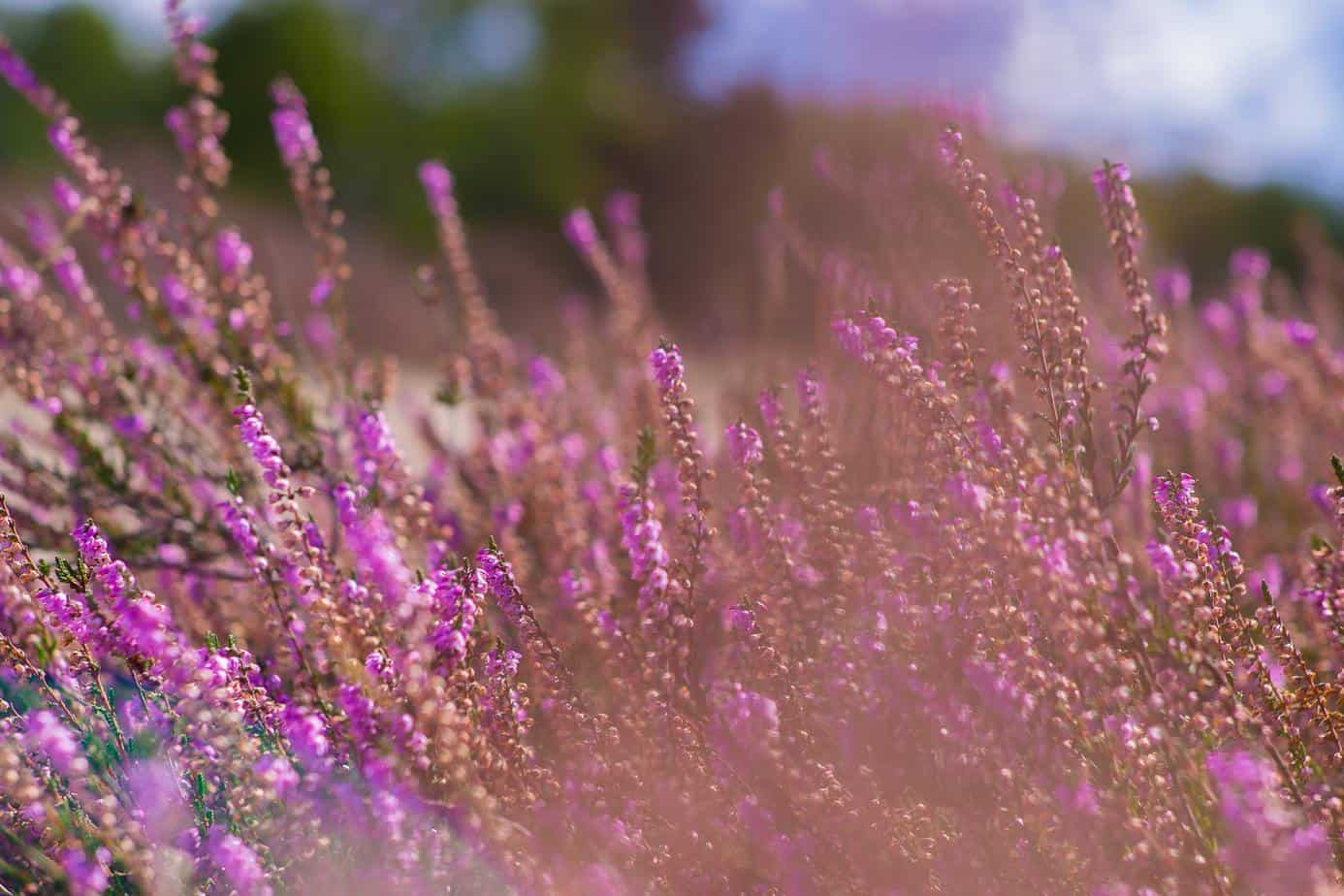
Romantic heath is mostly associated with English towns, but heather can also be successfully planted in our native gardens. Check what you should keep in mind while growing heathers.
Heather is undoubtedly the most beautiful ornament of autumn gardens. They belong to the heather family which includes around 4000 species. Among them, the most popular is the common heather. Heather grows naturally in forests and mountains, forming characteristic clusters called heathlands. The shrubs usually reach a height of about 40 cm and their flowers are pink and purple, although you can also find yellow, red and white flowers. The flowering period usually lasts from July until the first frosts in October.
Heather should be planted in sunny and sheltered corners of the garden where it will flower and overwinter better and avoid disease. It is a good idea to plant them on a small hill. The soil should be the same as it is in the wild, for example, in a forest, i.e. acidic (pH 3.5-5.5), permeable, moderately fertile and with a high proportion of humus. If the soil in our garden is not acidic enough, it can be supplemented with acid peat or compost.
It is worth remembering that heathers do not like strong winds, so it is a good idea to plant them surrounded by conifers and rhododendron shrubs, which have similar soil requirements.
It’s best to plant heather in spring or autumn, in groups, paying attention that the distance between shrubs is from 20 to 30 cm. Most often there are about nine shrubs per square meter. If we want to create a multi-species heath in our garden, we can also plant andromeda, junipers, spruces, palm trees, thymes, hollyhocks or bulbs among the heathers.
After planting the plants we water them, avoiding soaking the above-ground part, and we mulch the soil with, for example, pine bark. Heather has a shallow root system, which makes it vulnerable to drying out and that is why mulching is necessary. The mulch will prevent the evaporation of water from the soil and the spread of weeds.
Heather is not demanding in terms of care, but it is worth remembering a few most important rules in order to enjoy a beautiful heath in your garden.
The shrubs do not need excessive fertilization but if you decide to buy special preparations, choose those intended for acid-loving plants and those with slower action and use them according to the manufacturer’s recommendations.
Heather does well without watering, but because of their root system it is necessary to pay attention to whether the ground is not too dry, especially in the period of rooting and during droughts. The plants should be watered not too often but abundantly, being careful not to wet the leaves. The best time is in the morning.
It is also important to trim the heather bushes every year. You should remove the stems together with the old inflorescence, thanks to which the plant will bloom more luxuriantly next year. Every four years you can cut the bush very low. In addition, it is best to cover the heather for the winter, for example with conifer branches or agro-fibre to protect it from frost.
Main photo: Joran Quinten/unsplash.com